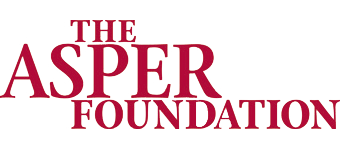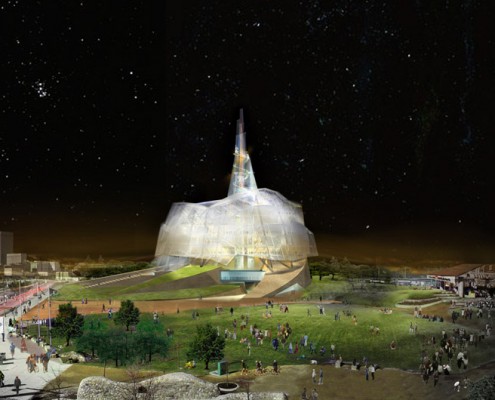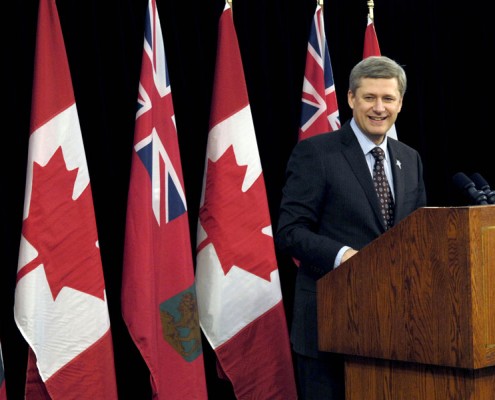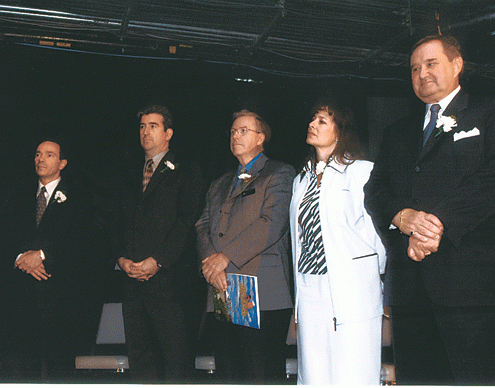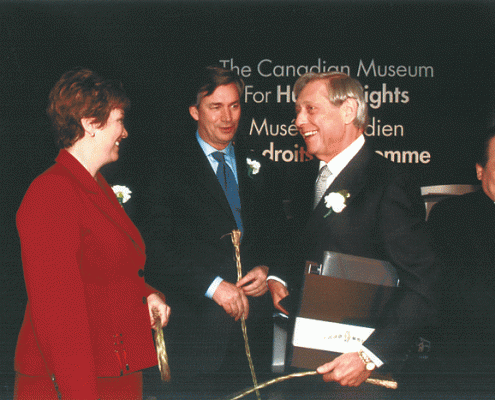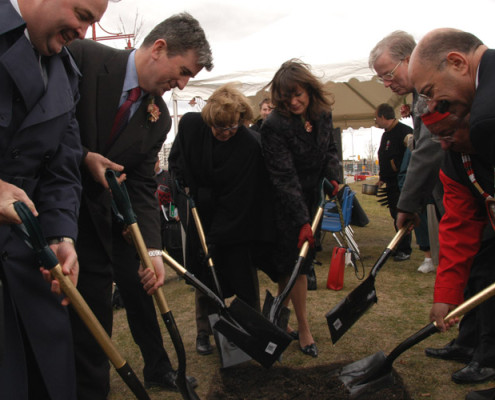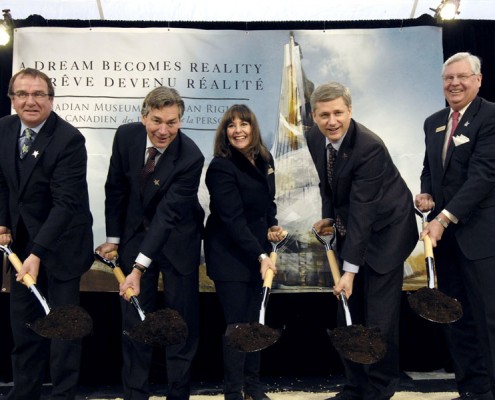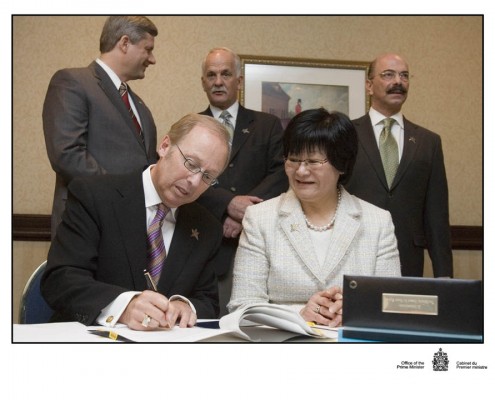Canadian Museum for Human Rights Opening Ceremony, 9/19/14
Related Articles & Links
- Canadian Museum for Human Rights
- Friends of the Canadian Museum for Human Rights
- Friends of the Canadian Museum for Human Rights Spring 2019 Donor Impact Report
- Article: Canadian Museum for Human Rights keeps proving the skeptics wrong (The Globe and Mail, 05/31/18)
- Article: Moving from “Bystander” to “Rescuer” (Lilith Magazine, Winter 2014 – 2015, Vol. 39 #4)
- Article: Canadian Museum for Human Rights: Designed by Antoine Predock Architect (Architect Magazine, January 2015)
- Article: World’s Coolest New Tourist Attractions 2015 (Travel + Leisure Magazine, January 2015)
- Article: First Person – Gail Asper (Lifestyles Magazine, December 2014)
- Video: CMHR Commercial (English) (Travel Manitoba)
- Video: CMHR Commercial (French) (Travel Manitoba)
- Video: CMHR Public Service Announcement 1 (CMHR)
- Video: CMHR Public Service Announcement 2 (CMHR)
- Video: CMHR Public Service Announcement 3 (CMHR)
- Video: CMHR Public Service Announcement 4 (CMHR)
- Video: CMHR Public Service Announcement 1 (French) (CMHR)
- Video: CMHR Public Service Announcement 2 (French) (CMHR)
- Video: CMHR Public Service Announcement 3 (French) (CMHR)
- Video: CMHR Public Service Announcement 4 (French) (CMHR)
Canadian Museum for Human Rights
As a lawyer, politician, entrepreneur, media executive and philanthropist, Israel (Izzy) Asper, O.C., O.M., Q.C., L.L.D. (1932 – 2003) believed strongly in giving back to his community while striving for excellence in all his endeavours. Both principles guided him in his quest to build the Canadian Museum for Human Rights (CMHR) in Winnipeg, Canada.
A proud and grateful Canadian, Asper was born in Minnedosa, Manitoba in 1932, to parents Leon and Cecilia, who were Jewish immigrants from Eastern Europe. Asper attended the University of Manitoba and graduated from law school. In 1958, he embarked on a career in law and later became involved in politics and in business, establishing CanWest Global Communications, Ltd. in 1975. Starting with one broadcast station in Winnipeg, Manitoba, it grew to encompass television properties in several countries and over 60 newspapers.
Conscious of anti-Semitism which impacted his own life, he promoted human rights policy and educational programs, and supported the Manitoba Bill of Rights as leader of Manitoba’s Liberal Party from 1970 to 1975. He also sought inclusion of the Canadian Charter of Rights and Freedoms in the Constitution Act of 1982.
The idea for the CMHR was born on July 18, 2000. Over the next three years, Asper focused his energy on spearheading all aspects of the creation of the CMHR. On April 17, 2003, the twenty-first anniversary of the Charter of Rights and Freedoms, following the completion of a thorough feasibility study conducted by leading museum experts from across Canada, an event was held at the Forks of the Red and Assiniboine rivers in Winnipeg, Manitoba, at which time Asper first publicly announced the intent to create the Canadian Museum for Human Rights. The announcement included significant funding commitments from the Federal Government of Canada, the Province of Manitoba, the City of Winnipeg and land donated by the Forks Renewal Corporation. Prime Minister Jean Chretien was instrumental in providing the resources to conduct the study and also committed the first $30 million towards the capital cost. Private fundraising was soon overseen by the Friends of the Canadian Museum for Human Rights (“Friends”), the private charitable organization established to develop the CMHR.
On October 7, 2003, Israel Asper died suddenly at the age of 71, just as he was on his way to announce the architectural competition in Vancouver for the CMHR’s design. Babs Asper, his three children, David, Gail and Leonard, along with Moe Levy, Executive Director of The Asper Foundation, vowed to continue to fulfill Asper’s dream. Two weeks later, the symbolic sod-turning ceremony was held at the Forks and the architectural competition announced.
For the next four years, Gail Asper, O.C., O.M., LL.D., President of The Asper Foundation and Moe Levy, Executive Director of The Asper Foundation and CEO of the Friends, lobbied for support for the museum, lead the $150 million private sector fundraising campaign and prepared for the CMHR’s construction. In 2005, following an extensive competition, their architectural jury selected the iconic design of Antoine Predock, while Ralph Appelbaum, head of the largest museum design company in the world, was hired to develop the CMHR’s exhibits. Yet despite huge grassroots support, the political, bureaucratic and financial obstacles at times seemed too great to overcome and the project appeared doomed.
The election of the Conservatives and Stephen Harper as Prime Minister in the 2006 federal election was a decisive moment for the CMHR. Harper was impressed with the successful private fundraising efforts and supported the concept of a new national museum located outside of Ottawa. On April 20, 2007, a “Definitive Agreement” was signed by the federal government, the Friends of the CMHR, the Governments of Manitoba and Winnipeg, and the Forks Renewal Corporation.
The federal government pledged to commit $100 million in capital costs plus $21.7 million in operating costs while the Province of Manitoba and City of Winnipeg committed $40 million and $20 million respectively. Friends committed to raise an additional $105 million in private sector fundraising. In making the announcement, Prime Minister Harper noted that “It is appropriate that a national institution for human rights be erected here in Winnipeg, the historic gateway to the Prairies where so many of the Canadian battles for rights were fought and won”. Another year passed until a bill to amend the Museums Act was unanimously approved in the House of Commons and Senate and finally received Royal Assent on March 13, 2008.
With Prime Minister Harper in Winnipeg, the official ground-breaking ceremony took place on December 19, 2008- more than eight years after Israel Asper had conceived the project. At the event, the Prime Minister noted “This great national project will stand for freedom, democracy, human rights and the rule of law. We are building a monument to Canada’s embrace of humanity’s highest ideals.” The Canadian Museum for Human Rights opened on September 20, 2014.
For further information, please visit the websites of the Canadian Museum for Human Rights and the Friends of the Canadian Museum for Human Rights. To make a donation to the Museum, please click here.
